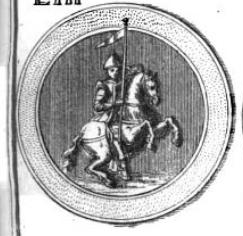
Helmold of Bosau was a Saxon historian of the 12th century and a priest at Bosau near Plön. He was a friend of the two bishops of Oldenburg in Holstein, Vicelinus and Gerold, who did much to Christianize the Polabian Slavs.
Marie of Champagne was the first Latin empress of Constantinople by marriage to Emperor Baldwin I. She acted as regent of Flanders during the absence of her spouse from 1202 until 1204.

The County of Hainaut, sometimes spelled Hainault, was a territorial lordship within the medieval Holy Roman Empire that straddled the present-day border of Belgium and France. Its most important towns included Mons, now in Belgium, and Valenciennes, now in France.

Baldwin V of Hainaut was count of Hainaut (1171–1195), margrave of Namur as Baldwin I (1189–1195) and count of Flanders as Baldwin VIII (1191–1195).

Namur was a county of the Carolingian and later Holy Roman Empire in the Low Countries, a region in northwestern Europe. Its territories largely correspond with the present-day French-speaking Belgian arrondissement Namur together with the northwestern part of the arrondissement Dinant, which are both part of the modern province of Namur. The modern provincial boundaries are based on the French Republican department of Sambre-et-Meuse.

The Chronicle of Moissac is an anonymous compilation that was discovered in the abbey of Moissac, but is now thought to have been compiled in the Catalan monastery of Ripoll in the end of the tenth century. Like most chronicles, it begins with Adam, but gains increasing interest for historians as it nears its end date of 828. Unfortunately, a folio with the entries covering the years 716–770 is missing. The only surviving manuscript of the Chronicle of Moissac dates from the later 11th century and is now in the French National Library in Paris.
Gerard I, Count of Guelders was Count of Guelders. He was the son of Theodoric of Wassenberg.
Gislebertof Mons was a clergyman in the administration of the County of Hainaut and a chronicler whose Chronicon Hanoniense is an essential eyewitness source for events affecting his patron Baldwin V, Count of Hainaut.

Henry the Blind, sometimes called Henry IV of Luxembourg, was his father's heir as Count of Namur from 1136 until his death, and heir of his mother's family as Count of Luxembourg from 1139 until his abdication in 1189. He also inherited the smaller lordships of Longwy, La Roche-en-Ardenne and Durbuy.
Alberic of Trois-Fontaines was a medieval Cistercian chronicler who wrote in Latin. He was a monk of Trois-Fontaines Abbey in the diocese of Châlons-sur-Marne. He died after 1252. He wrote a chronicle describing world events from the Creation to the year 1241.
Count Lambert "the Bearded" was the first person to be described as a count of Leuven in a surviving contemporary record, being described this way relatively late in life, in 1003. He is also the patrilineal ancestor of all the future counts of Leuven and dukes of Brabant until his descendant John III, Duke of Brabant, who died in 1355.

Agnes of Antioch, also known as Anna of Antioch and Anne de Châtillon, was Queen of Hungary from 1172 until 1184 as the first wife of Béla III.
Jean Pierier of Mailly, called Jean de Mailly, was a Dominican chronicler working in Metz in the mid-13th century. In his Latin chronicle of the Diocese of Metz, Chronica universalis Mettensis, the fable of Pope Joan first appears in written form. He is also the compiler of the Abbreviatio in gestis sanctorum, a collection of legends about the saints which is an important forerunner of the Golden Legend.
Giselbert van Loon is the first definitely known count of the County of Loon, a territory which, at least in later times, roughly corresponded to the modern Belgian province of Limburg, and generations later became a lordship directly under the Prince-bishopric of Liège. Very little is known about him except that he had two brothers, one of whom, Bishop Balderic II of Liège, is much better attested in historical records.
Manasses III, Count of Rethel was a son of Manasses II and his wife Dada. He succeeded his father as Count of Rethel in 1032.
Werner, Count in Hesbaye was a Lower Lotharingian count in what is now Belgium and neighbouring parts of Germany. During this period the once independent Kingdom of Lotharingia, was coming under the control of the new Kingdom of Germany, but it was also still contested by the Kingdom of France.
Conon II (Cono) (died 1189 or after), Count of Montaigu and Count of Duras, son of Godefroi, Count of Montaigu, and his wife Julienne, daughter of Otto II, Count of Duras.
Ansfried or Ansfrid, was a 10th-century count, who held 15 counties in Lotharingia, a former kingdom which contained the low countries and Lorraine, and which was coming under the control of the new Holy Roman Empire during his lifetime. He is sometimes referred to as "the elder" in order to distinguish him from his nephew, and apparent heir, Bishop Ansfried of Utrecht, who was also a powerful count until he became a bishop.

Opizzo III Malaspina known as Opizzino was the forefather of the Spino Fiorito branch of the Malaspina Family.
Arnulfof Valenciennes, was a 10th and 11th century count and perhaps sometimes a margrave, who was lord of the fort of Valenciennes, which was at that time on the frontier with France, on the river Scheldt. It was part of the pagus of Hainaut, in Lower Lotharingia, within the Holy Roman Empire.








